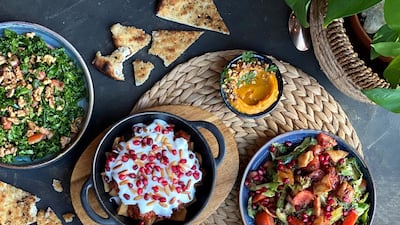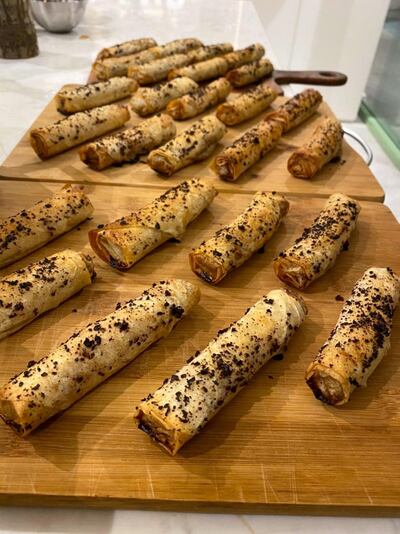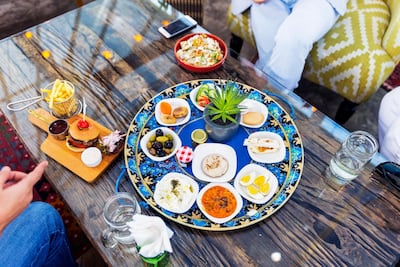Iftars are often synonymous with piles and piles of delicious food. And while that can be a sight for sore eyes after a day of fasting, it can also quickly lead to a lot of wastage.
However, with more people and companies striking up discussions on food waste in recent years, there has been a drive towards more wholesome and environment-friendly ways to break a fast.
Enter the zero-waste iftar, a concept that has been gaining popularity over the past few years. Zaina Kanaan, the co-founder of upcycling cafe Kave, which is serving zero-waste iftars for the second year in a row, describes them as meals with "rationalised portions and limited number of bookings".
“There’s no wastage of food that’s not been touched,” she says.
Chef Ahmad Halawa, who will be preparing one such zero-waste iftar at Kave as part of Alserkal Avenue's #ThisIsNotABuffet programme, adds that it's all about being mindful of our resources. "There are so many people who don't have access to regular food," he says. "We don't want to take what we have for granted."
Thinking of having a zero-waste iftar yourself? Here are some tips to keep in mind.
It’s all about portion-control
“When people have been fasting all day, they think they’re going to eat a lot – but there’s only so much you can have at one sitting. By the time people have their soups, salads and sides, they start getting full, so it’s really important to exercise proper portion sizes,” says Halawa.
Ensuring you don't make more than your guests can eat is a huge part of planning a no-waste iftar, he says.
Once the number of guests has been confirmed, a good rule of thumb is ensuring there’s approximately 200 grams of rice, 150 to 200 grams of protein and 150ml of soup per person.
He also usually makes 15 to 20 per cent extra in case guests ask for a second helping of a dish they like.
Present it in such a manner that the table looks full
“During Ramadan people want to see a table full of food – and a lot of people and restaurants tend to cook too much as a sign of generosity – but there’s a fine line between being generous and being wasteful,” says Halawa.
In such instances, when portion quantity is being controlled to stop wastage, presentation is everything, he says.
You can make the table look fuller by adding centrepieces, napkins and other decorative elements. Another hack is to have individual bowls for sides and dips for every guest.
However, ensure there’s no single-use plastic being used to create this table display. Opt for reusable cutlery and plates wherever possible, or those made from leaves, paper or other biodegradable materials.
Serve courses one after another

Having several courses served one after another is the norm in most restaurants – and there's a real benefit to doing this.
As Kanaan points out, when guests are served one course after another, instead of just putting everything out on a table, they tend to fill up slowly. It allows guests to better ration what they’re eating, stops them from consuming more than their body needs and minimises food wastage overall.
“That’s one of the reasons we never do buffets – it’s harder to reduce wastage when you’re serving food as a buffet,” she says.
Use 'waste' ingredients and leftovers
Minimising wastage begins in the kitchen. For example, Kanaan cites soups as a super-saver that can easily be prepared using ingredients that would otherwise go to waste.
“Bones can be boiled to make stock, and most vegetables can also be boiled and then ground into a tasty soup that’s perfect for iftar.”
Rice is another miracle ingredient that can be used in myriad ways. If there are leftovers, one can boil lentils separately and mix it with the rice to make mujadara, a classic Arabic dish. Leftover rice can also be turned into a pudding or a paella.
Finally, Kanaan recommends experimenting with ma'loubeh, a Palestinian dish that translates to "upside down". "In the old days, people made it with leftover rice, by adding chicken or meat and eggplant. It's an old recipe but so nourishing."
Parcel what’s left to the guests
Feel like there are some dishes that simply cannot be re-used? Simply pack it up for the guests. But, in the spirit of being zero-waste, ensure it’s done with biodegradable, eco-friendly containers.




